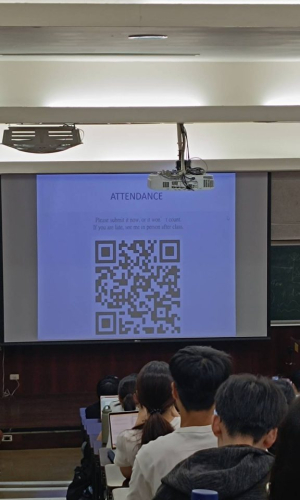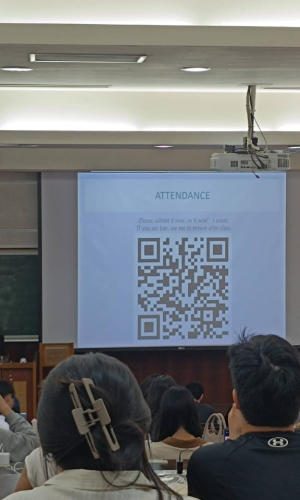土木二 Yazidane Hakim
As an international civil engineering student, I was looking for an interesting and unique course to enroll in. Many of my friends recommend Shelomi Matan’s “Edible Insects” course, so I’m excited to share with you my recent enrollment during my exciting journey this study at National Taiwan University.
My curiosity was piqued when I first heard about the “Edible Insects” course. I found the idea of exploring an unconventional but important subject fascinating. In many cultures, insects are considered edible, and their potential as a sustainable food source is attracting global attention.
Enrolling in the course was an effortless process. The course doesn’t have strict requirements and is English-friendly for international students. The university provided detailed information about the course structure and objectives. This likely the reason to the high enrollment, with around 249 students joining the class.
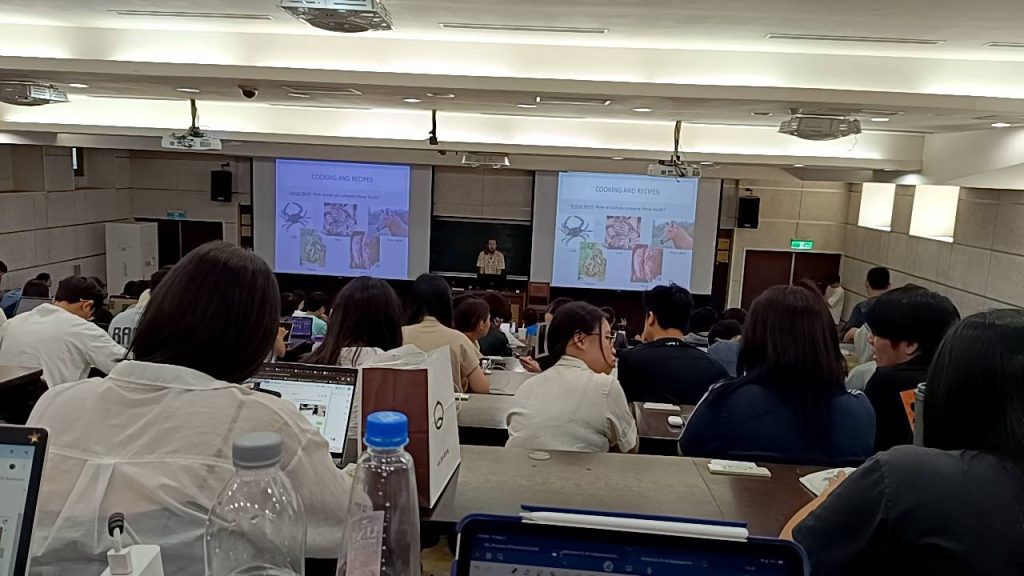
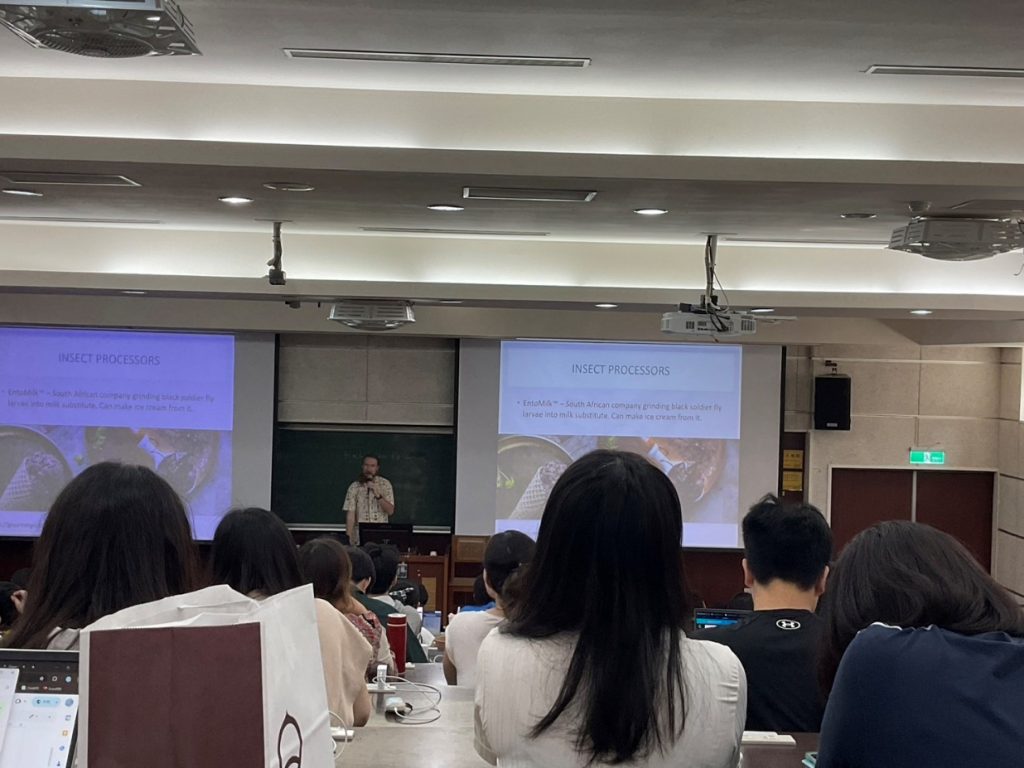
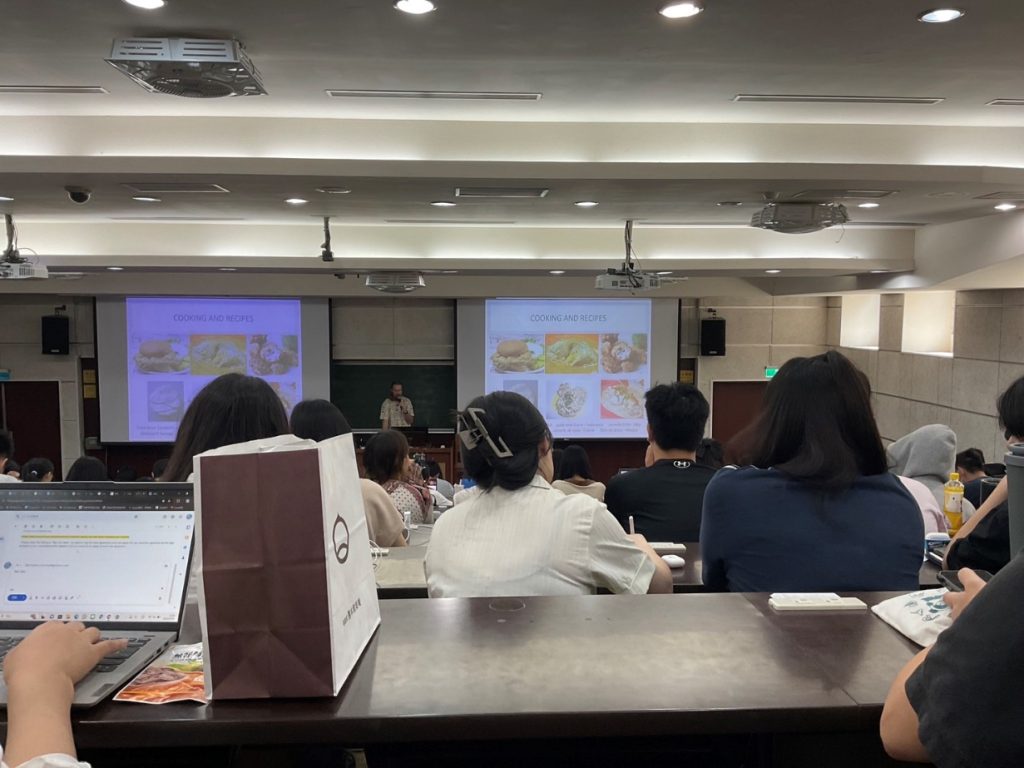
First Segment: Modules Explanation
The course is divided into three segments per session, with each session lasting a total of two hours. The first part of the class gives us an overview of the weekly modules. These modules cover the nutritional benefits of edible insects, their cultural significance, and their potential to help solve global food security issues.
Our professor dives into a wide range of topics, from how insects are eaten in different parts of the world to traditional and modern methods of preparing them. The lectures are not just informative but also very engaging. The professor’s goal is to get us to rethink our ideas about eating insects. For example, we learn about how insects are already a regular food source in some cultures and how they might become a more common part of diets elsewhere because of their sustainability and nutritional benefits.
The content is thought-provoking and offers a lot of insights into how edible insects can play a role in creating a more sustainable future. We look closely at the environmental benefits of farming insects, such as lower greenhouse gas emissions and reduced land and water use compared to traditional livestock farming. As a civil engineering student, these discussions are particularly relevant to me because they expand my understanding of sustainability and resource management, which are key issues in our field.
Second Segment: In-Class Discussions
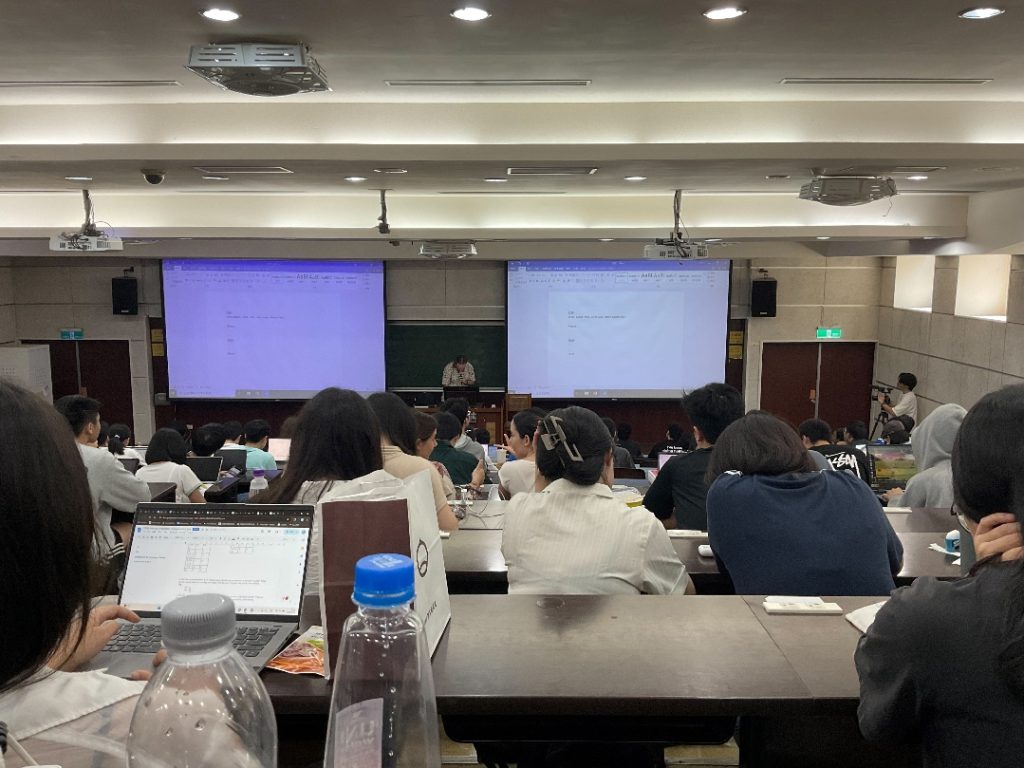
Second segment, in-class discussion
One of the most stimulating aspects of the course is the in-class discussions, which acts the second segment of the class segment. During these discussions, everyone, including the lecturer, participates actively. The lecturer starts by presenting a debatable argument related to the week’s topic. These arguments are carefully chosen to have no definitive right or wrong answer, encouraging a rich dialog.
Students are invited to share their perspectives and reasoning, elaborating on why they support one argument over another. This format allows us to explore different viewpoints and understand the complexity of the issues at hand. Having everyone involved in the learning process creates a dynamic and inclusive environment. We share our experiences and perspectives, which are often shaped by our diverse cultural backgrounds and academic disciplines.
These discussions not only deepen our understanding of edible insects but also foster critical thinking and effective communication skills. It is fascinating to see how different arguments can be made for the same issue, highlighting the multifaceted nature of sustainability and food security.
Third Segment: Class Attendance
Third segment, class attendance
To ensure active participation and engagement, the course includes an innovative attendance system. At the end of every class, the lecturer provides a QR code that students must scan using their smartphones. This QR code links to a Google Form where students are required to input their name and student ID as a proof of attendance. This method serves as the last segment of each class session.
This system not only simplifies attendance tracking but also encourages students to remain engaged until the very end of the class. The attendance score contributes to the final grade, persuading students to participate actively in discussions and activities.
This approach creates a sense of responsibility and ensures that students are consistently involved in the learning process. The QR code system is convenient and efficient, making it easy for both students and instructors to manage attendance records. It reflects the course’s commitment to leveraging technology to enhance the educational experience. By making attendance a scored component, the course underscores the importance of active participation and continuous engagement.
As a civil engineering student, my studies typically revolve around structural and constructing buildings. However, the “Edible Insects” course has opened my eyes to the broader implications of sustainability and resource management. By learning how alternative food sources can play a significant role in creating a more sustainable world, which is directly relevant to the principles of sustainable engineering practices.
Additionally, the course includes other interactive elements such as weekly discussion assignments and group projects. These activities encourage collaboration and critical thinking, allowing students to engage with the material in meaningful ways. For instance, group projects might involve researching different edible insect species.
This course has not only expanded my knowledge but also provided me with a unique perspective on global challenges and innovative solutions. The insights gained from this course will undoubtedly influence my approach to future projects in civil engineering, particularly in areas related to sustainable development and environmental impact.





